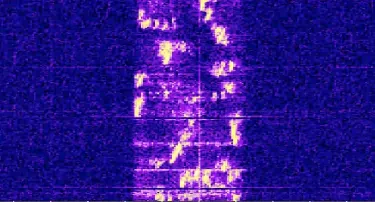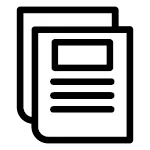XM is a commonly heard signal which is a result of audio feedback that’s been accidentally transmitted. For a long time, it’s cause was unknown. It used to be classified as a noise station, and was given an ID by ENIGMA 2000. It was often confused with an actual station or some other unknown source causing the strange noises on the shortwave. However, this sound is now easily explained.
Recording Sample
Sometimes voices can be heard in the background of the mic that is producing the feedback to the XM broadcast, which is some of the best evidence it’s an audio feedback loop. The most common cause of this is feedback comes from many known Russian frequencies, but it’s also happened on the HF-GCS as well.
The result of XM noise is usually low pitched repetitive tones. It can be heard in many places around the world, and most commonly around Europe.
XM History
The station was first reported on 10512 kHz at the beginning of May 2004. Shortly after, it was observed again on 10363 kHz. Both signals were strong in Europe and continued until the end of June 2004.
In the past, it’s been theorized these signals could be a form of communication called LINCOMPEX (Linear Compression & Expansion). It was a known system used as a communication method both by commercial and defense industries. One ENIGMA correspondent suggested it was caused by the Lincompex “pilot tone seeking lock”.
This was soon debunked in August of 2004 though, when Robert G. Damrau (WA1LOT) a licensed ham sent his comment to ENIGMA. WA1LOT worked for Nevada Solar Designs in Sparks, Nevada and has considerable past experience of working with LINCOMPEX systems
‘Having worked with Lincompex for 20+ years and probably having one of the few remaining working units, I’m almost certain that this not a Lincompex transmission. A Lincompex transmission has two components a compressed original audio (typically voice) and a frequency modulated “pilot tone” deviated based on the original audio (voice) amplitude. The received signal would sound as strong voice with a slightly warbling higher tone. The Expanded signal as Lincompex processing would be the original voice with bits of the “band noise” trapped to it.’
Explanation of How to Recreate XM
You can generate this sound quite easily with an HF transceiver and an a SWL receiver. Set the receiver in the opposite modulation mode, and take the microphone of the HF transmitter and place it near the speaker of the SWL receiver. Make sure that the receiver is not connected to an outside antenna — and you probably don’t want to transmit the “effects.”
Token’s Recording Sample
What you will hear is the audio of the the transceiver feeding back from the SWL receiver. Try setting the SWL receiver modes to upper and lower sidebands and you will hear different sounds. If you set it to AM then you will just hear the familiar howl. You can change the timing of the ringing (feed back) by changing the position of the microphone or the volume (amplitude) of the feed back audio.
However I believe that the transmission you recorded is from a more sophisticated setup where there’s a receiver and transmitter in separate locations and being mixed and rebroadcast. This particular instance sounds like someone injecting audio from either a CODAR station or WWV in the same room. There’s a faint timing to it, and maybe it’s just the CODAR station PRI and the receiver tweaking a bit to make the “click”.
I have experienced people playing around with “parrot” repeaters set up on 80 and 40m bands, and rebroadcasting my signal and others during a rag chew. It was annoying, but cool at the same time. It made us sound like we had XXX kW stations whereby our signal was making it around the world.
Written by Kevin Griffith on Token’s XM Recording – September 7th, 2014
Station Summary
Nickname: The Backwards Music Station or Whales
Emission Mode: USB, has a sweeping signal
Sources
Mystery Signals of the Shortwave -” The Backward Music Station or Whales – XM”
Curt Rowlett – Waterfall View





